Key takeaways:
- Dog fostering significantly impacts both the animals and the foster families, creating strong emotional bonds and enriching personal experiences.
- Establishing routines and effective socialization are crucial for the successful adjustment of foster dogs.
- Animal protection plays a vital role in advocating for the rights and well-being of abandoned or abused animals, fostering empathy and compassion in society.
- Heartwarming stories of successful placements highlight the transformative power of fostering and the joy it brings to both animals and their new families.
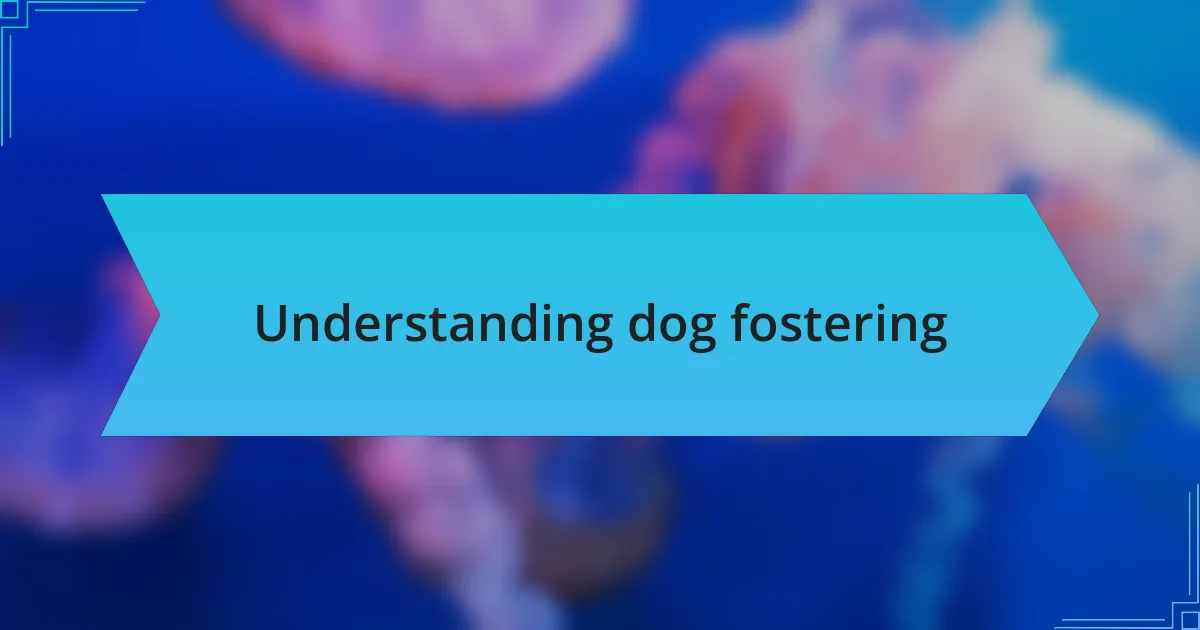
Understanding dog fostering
Dog fostering is a beautiful and essential way to support animals in need. From my experience, each time I’ve brought a dog into my home, I felt a sense of purpose—it was like I was making a small yet significant impact in their lives. Can you imagine the relief a dog feels when they finally leave the shelter for a temporary home? It’s an incredible transformation.
One unforgettable moment was when I fostered a timid puppy named Bella. Initially, she hid under the couch, frightened of her new surroundings. It took patience and gentle encouragement, but eventually, she blossomed into a playful, affectionate companion. This experience made me realize how important a nurturing environment is for these animals; they often just need a little love and space to grow.
Fostering doesn’t only help the dogs; it also opens your heart to new experiences and connections. Have you ever felt that rush of joy when a dog first snuggles up to you? It’s that bond of trust that reminds us how powerful compassion can be. Each fostering experience not only saves a life but enriches your own journey, making it all the more worthwhile.
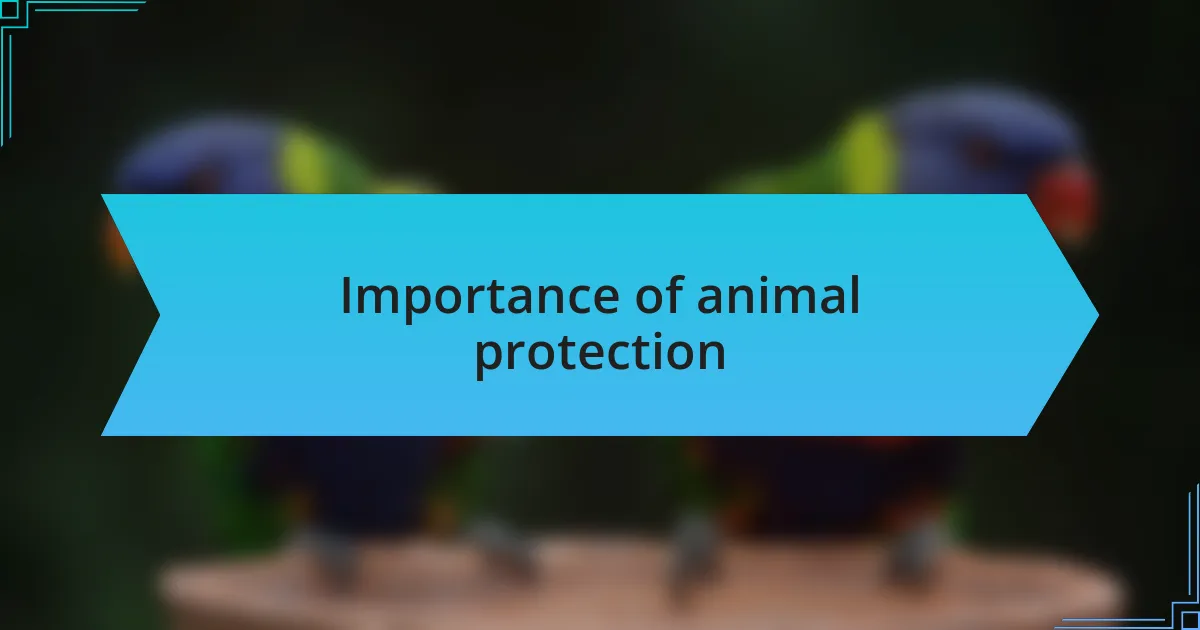
Importance of animal protection
The importance of animal protection cannot be overstated. Every year, countless animals find themselves abandoned or abused, relying on organizations and individuals to advocate for their rights and well-being. I often think about the dogs I’ve fostered—each one represents a story of resilience. How many animals like them are out there, waiting for someone to stand up for them?
When I consider the role of animal protection, I realize it transcends mere advocacy; it’s about creating a world where every animal is treated with dignity and respect. I remember a time when I encountered a stray dog who was injured and scared. It was heartbreaking to see this innocent creature in pain. I felt compelled to help, and that moment solidified my understanding of why animal protection is crucial. It’s about saving lives, providing care, and showing that compassion exists even in the darkest situations.
Moreover, animal protection fosters a deeper connection between humans and animals. Each act of kindness can spark a ripple effect, encouraging others to join the cause. Have you ever witnessed the joy on a child’s face when they rescue a pet? That shared experience builds empathy and understanding. It shows that protecting animals isn’t just an act of charity; it’s an essential part of cultivating a humane society. The bond we share with animals teaches us valuable lessons about love, responsibility, and the importance of standing up for those who cannot speak for themselves.
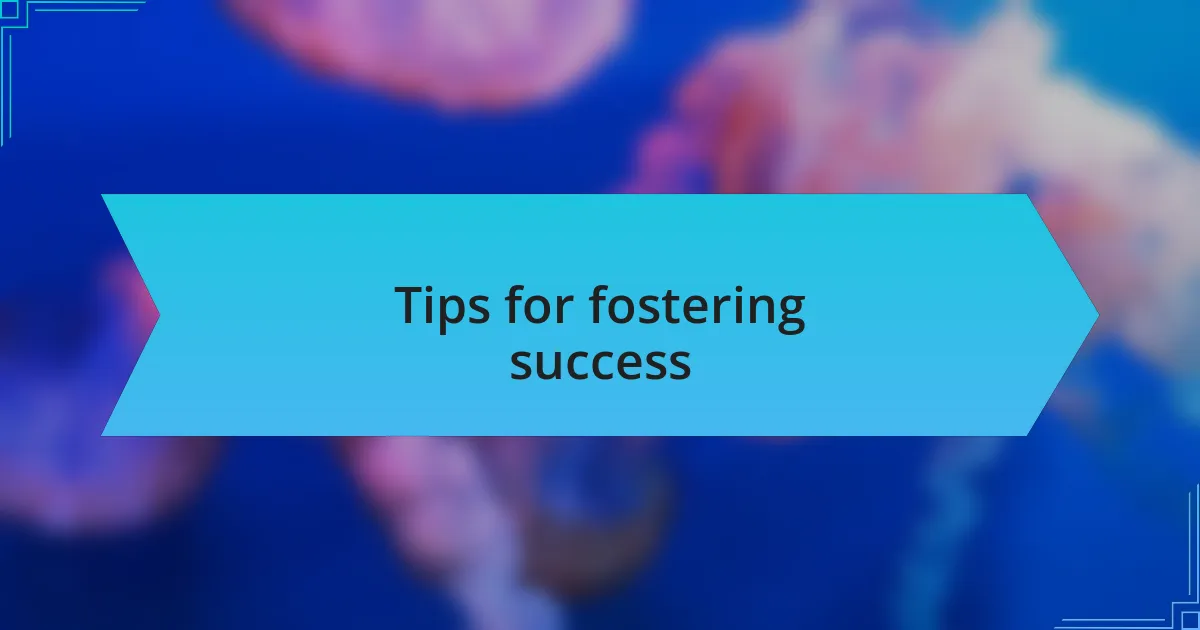
Tips for fostering success
Establishing a routine for your foster dog is vital for success. I learned this lesson when I took in a pup who was incredibly anxious. By implementing a consistent schedule for meals, walks, and playtime, I gradually saw her relax and start to feel secure in her new environment. Have you ever noticed how comforting routines can be, not just for humans but for animals too?
Socialization is another key factor in fostering effectively. When I first brought home my most recent foster, she was shy and suspicious of new people. I began introducing her to different environments and other pets slowly, allowing her to build confidence over time. It made me wonder: how much does social experience shape their behavior? Seeing her blossom into a more playful and friendly dog reminded me just how impactful these interactions can be.
Lastly, open communication with your fostering organization can make a significant difference. When I had questions or concerns about my foster dog’s health, reaching out to the organization provided me with guidance and support that was invaluable. It reinforced my feeling that fostering is a partnership, and having that safety net helped me feel more confident in my role. Isn’t it reassuring to know you’re not alone in this journey?
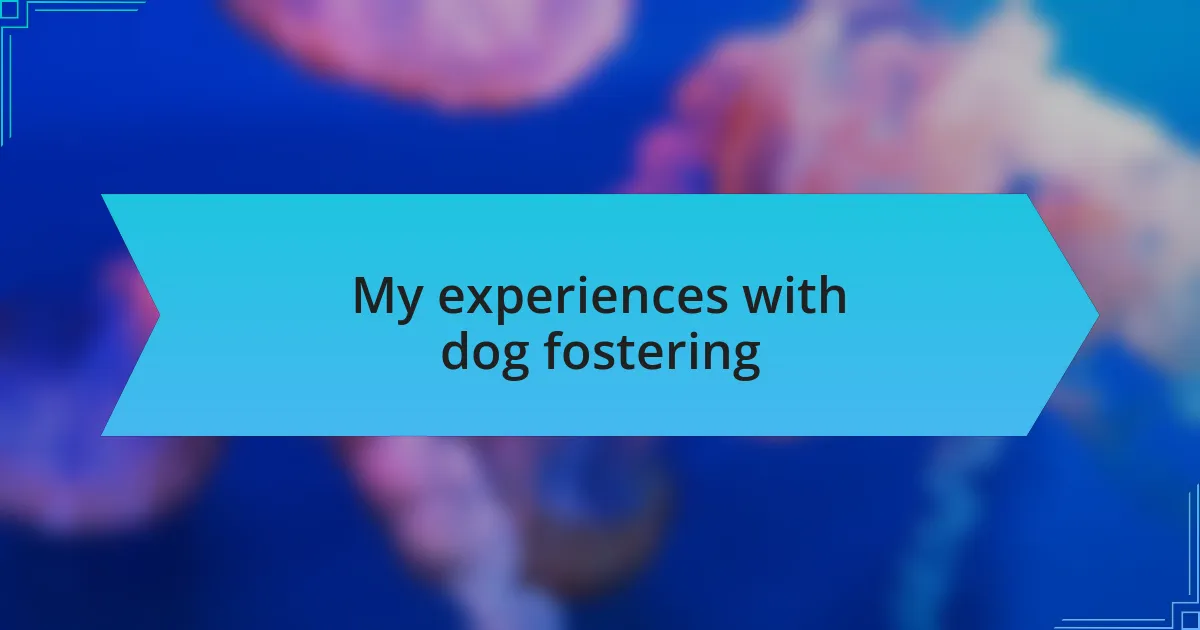
My experiences with dog fostering
Fostering dogs has been a profoundly rewarding journey for me. I remember one particular evening when I took in a scared little beagle. She hid under the couch for hours, her big brown eyes filled with uncertainty. After a few gentle coaxing sessions and a couple of treats, she finally emerged, cautiously wagging her tail. That moment struck me—how far a little patience and love can go in helping a dog feel at home.
One of the most surprising lessons was the emotional bond that can develop so quickly. With my third foster, a lively terrier mix, I found myself laughing at his quirky antics daily. He had this charming habit of “talking” back to me in the funniest ways when I tried to teach him commands. His joyful spirit reminded me that fostering isn’t just about providing shelter; it’s about creating a connection that transforms both our lives. Has a pet ever changed your perspective so radically?
There were also challenging days, like when one of my fosters had trouble adjusting to my existing pets. I distinctly recall a tense moment when he barked at my older dog, who preferred a quieter life. The gradual introduction process was stressful but rewarding as I learned to manage their interactions. In retrospect, those struggles deepened my understanding of each dog’s personality and history, ultimately enriching the experience for all involved. How do we truly grasp their stories unless we invest time to understand their unique backgrounds?
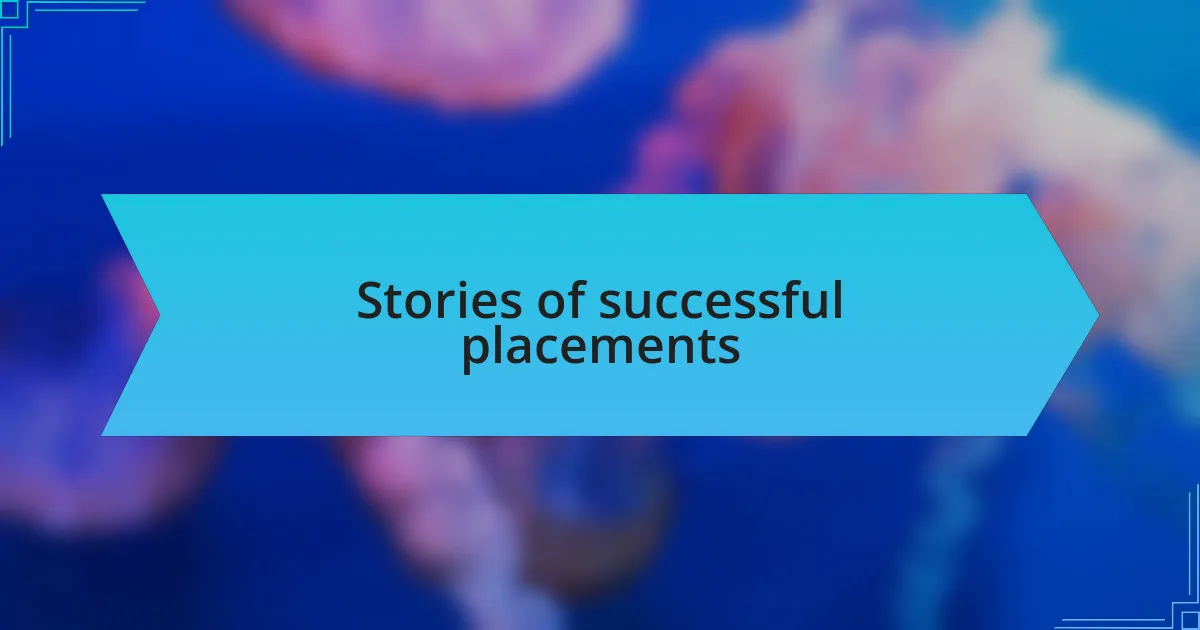
Stories of successful placements
Successful placements often come with heartwarming stories that remind me why I started fostering in the first place. I think back to the day I received an application for Max, a shaggy mix who had been living in the shelter for months. When his new family came to meet him, I could see the instant spark; Max literally jumped into their arms, soaking them with his joy. The tears in their eyes spoke volumes—they had been searching for him, and in that moment, it felt like fate had finally united them.
Another memorable placement involved Daisy, an older lab who had endured a rough past. It took time for her to trust, but gradually, she started leaning into my hand during walks. When she finally wagged her tail excitedly after a few weeks, I felt a blend of happiness and pride. Watching Daisy thrive in her forever home, where she ended up receiving all the love and care she had deserved, was incredibly fulfilling. Isn’t it amazing how a little trust can blossom into a lifetime of companionship?
I also cherish the story of a shy puppy named Coco who found her forever home with a kind family that specialized in training anxious dogs. The transformation was remarkable. Seeing her take her first steps out of her shell while playing with their kids reminded me of the beautiful impact a supportive environment can have. Have you ever witnessed a timid spirit shine brighter in a warm, welcoming home? It’s moments like these that make the effort of fostering not just worthwhile, but profoundly meaningful.